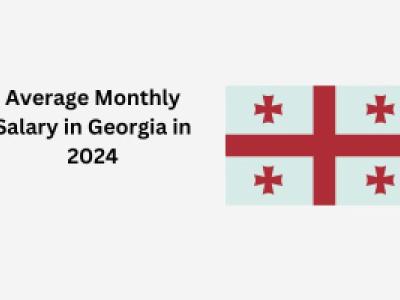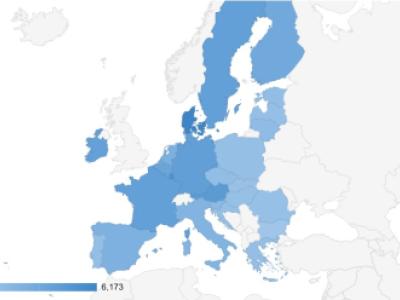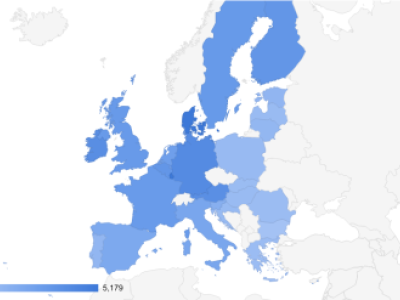For the fifth year in a row, I'm publishing my humble observations on average salary changes in the European Union. In this article, I've compared both gross and net average salary for 2018.
Update: Average Monthly Salary in European Union 2020
As in the case with minimum wages in the European Union 2018 article, for this year's average salary article, I was able to pull data both for gross and net minimum wage values across the European Union.
I wouldn't call below written scientific research, as most of the data in this article are taken from Wikipedia's article List of European countries by average wage. To make it more interesting I've added a column for tax - by having both values (gross and net) I did a simple calculation to see approximate tax rates in member states.
All calculations are done using Google Spreadsheets. Data provided below might not be 100% accurate but they should give an overall insight on average salary levels across European Union member countries.
Countries are ranked by average net salary in 2018
For previous year rankings see:
- Average Salary in European Union 2017
- Average Salary in European Union 2016
- Average Salary In European Union 2015
- Average Salary in European Union 2014
| 2018 | 2017 | |||||
| Rank | Country | Gross | Net | TAX | NET | % |
| 1 | Denmark | €5,191.00 | €3,270.00 | 37.01% | €3,095.00 | 5.35% |
| 2 | Luxembourg | €4,412.00 | €3,159.00 | 28.40% | €3,009.00 | 4.75% |
| 3 | Sweden | €3,340.00 | €2,570.00 | 23.05% | €2,465.00 | 4.09% |
| 4 | Finland | €3,380.00 | €2,509.00 | 25.77% | €2,509.00 | 0.00% |
| 5 | Ireland | €3,133.00 | €2,479.00 | 20.87% | €2,464.00 | 0.61% |
| 6 | Austria | €3,632.00 | €2,324.00 | 36.01% | €2,009.00 | 13.55% |
| 7 | Germany | €3,703.00 | €2,270.00 | 38.70% | €2,270.00 | 0.00% |
| 8 | France | €2,957.00 | €2,225.00 | 24.75% | €2,157.00 | 3.06% |
| 9 | Netherlands | €2,855.00 | €2,155.00 | 24.52% | €2,263.00 | -5.01% |
| 10 | United Kingdom | €2,498.00 | €1,990.00 | 20.34% | €2,102.00 | -5.63% |
| 11 | Belgium | €3,401.00 | €1,920.00 | 43.55% | €2,091.00 | -8.91% |
| 12 | Italy | €2,534.00 | €1,758.00 | 30.62% | €1,762.00 | -0.23% |
| 13 | Spain | €2,189.00 | €1,749.00 | 20.10% | €1,718.00 | 1.77% |
| 14 | Cyprus | €1,779.00 | €1,658.00 | 6.80% | €1,658.00 | 0.00% |
| 15 | Slovenia | €1,626.00 | €1,062.00 | 34.69% | €1,074.00 | -1.13% |
| 16 | Malta | €1,379.00 | €1,021.00 | 25.96% | €1,021.00 | 0.00% |
| 17 | Estonia | €1,221.00 | €957.00 | 21.62% | €945.00 | 1.25% |
| 18 | Portugal | €1,158.00 | €925.00 | 20.12% | €984.00 | -6.38% |
| 19 | Greece | €1,092.00 | €917.00 | 16.03% | €947.00 | -3.27% |
| 20 | Czech Republic | €1,149.00 | €873.00 | 24.02% | €837.00 | 4.12% |
| 21 | Croatia | €1,081.00 | €802.00 | 25.81% | €792.00 | 1.25% |
| 22 | Poland | €1,102.00 | €784.00 | 28.86% | €752.00 | 4.08% |
| 23 | Slovakia | €980.00 | €748.00 | 23.67% | €755.00 | -0.94% |
| 24 | Latvia | €1,013.00 | €738.00 | 27.15% | €703.00 | 4.74% |
| 25 | Lithuania | €885.00 | €693.00 | 21.69% | €637.00 | 8.08% |
| 26 | Hungary | €955.00 | €635.00 | 33.51% | €622.00 | 2.05% |
| 27 | Romania | €787.00 | €565.00 | 28.21% | €515.00 | 8.85% |
| 28 | Bulgaria | €586.00 | €457.00 | 22.01% | €406.00 | 11.16% |
Data source: List of European countries by average wage
This is a list of countries containing monthly (annual divided by 12 months) gross (before taxes) and net income (after taxes) average wages in Europe in EUR currency.The table above reflects the average (mean) wage as reported by various data providers. In less developed markets, actual incomes may exceed those listed in the table due to the existence of grey economies.

The average salary in European Union 2018
The gap (in terms of net salary) between richest (Denmark) and poorest (Bulgaria) is 7.15. Which actually is shrinking, as in 2017 the gap between Denmark and Bulgaria was more than 7.6 times.
There is one thing that should be kept in mind, not all countries in this list have adopted EUR currency, in fact, there are 9 out of 28 countries in EU using their national currencies instead of EUR. ( Bulgaria, Croatia, Czech Republic, Denmark, Hungary, Poland, Romania, Sweden and the United Kingdom)


